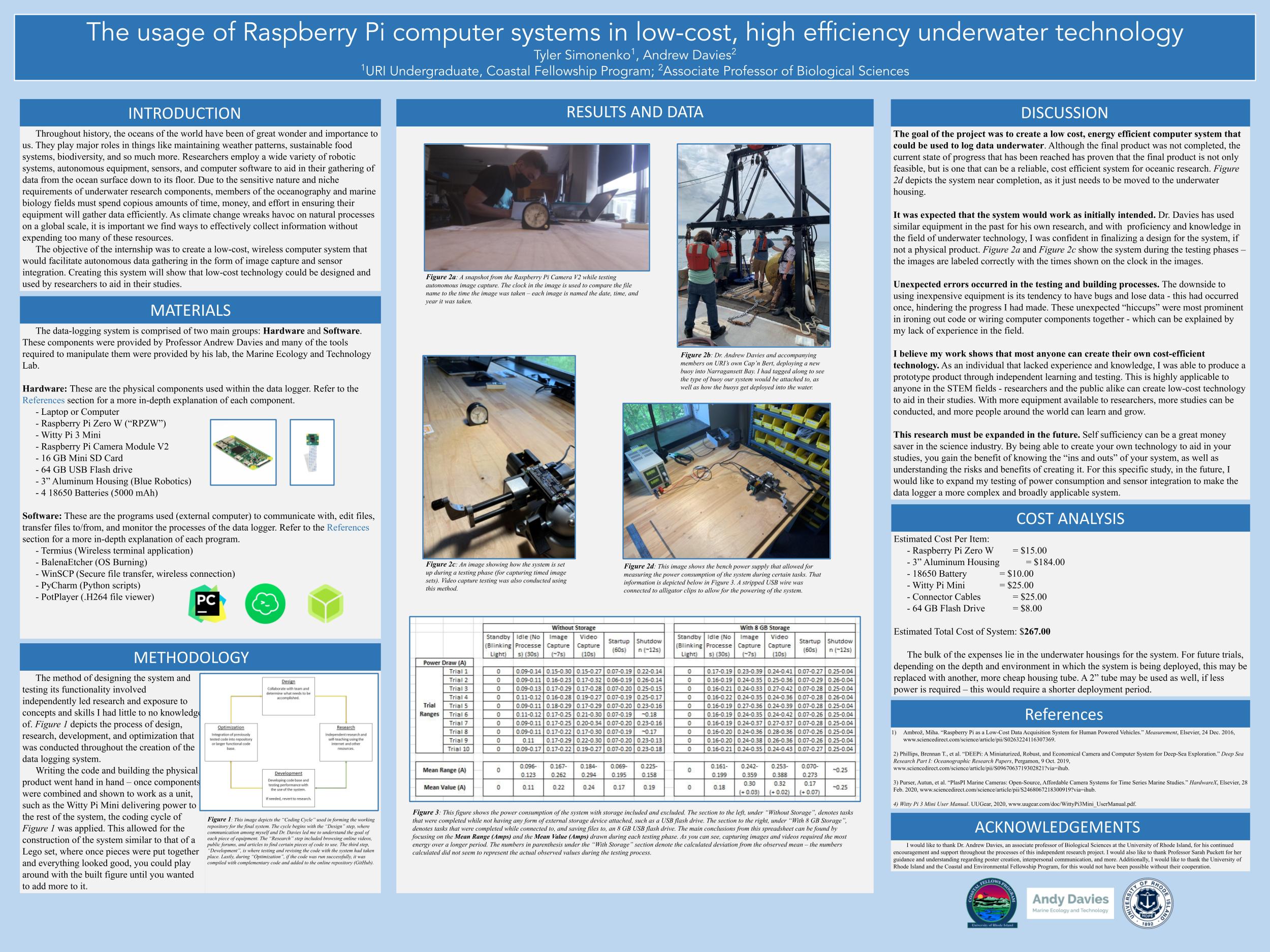The usage of Raspberry Pi computer systems in low-cost, high efficiency underwater technology
Abstract:
The oceans play major roles in global weather patterns, sustainable food systems, maintaining biodiversity, and much more. We must work to understand the oceans to protect against the harmful effects of climate change. Modern oceanic research practices depend heavily upon expensive, highly specialized equipment. The purpose of my research is centered around learning about the coding languages, hardware, and software commonly used by scientists in this field. Additionally, the goal was to design an autonomous underwater system to log images and environmental data. Accomplishing this design meant two things: first, to compile a repository of code by conducting independent research online, and second, to integrate that code with the hardware necessary to carry out each task. With the limited time given, the system was not completed in full, but functioned as intended and was able to carry out multiple autonomous tasks without the need for input from the user. These tasks included autonomously scheduling startup and shutdown times, image capture, video capture, date and time management, and more. The system’s power consumption while performing tasks was considered when determining the deployment period and task cycle – this led the way for determining the form factor and housing of the system. With the near completion of the final product, it is evident that reliable, low-cost, energy efficient technology can be created for usage out in the field. Researchers, students, and the public alike can participate in similar independently led projects to help better their studies and aid in the gathering of crucial environmental data to help protect against the damages of climate change. For further study, I suggest that the power consumption of the system be understood further, along with the integration of other underwater sensors.
 Home
Home Browse
Browse Close
Close Events
Events Maps
Maps Email
Email Brightspace
Brightspace eCampus
eCampus




